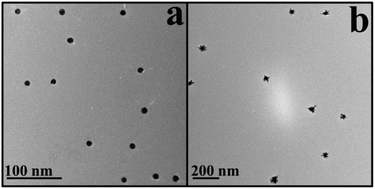A SERS-active sensor based on heterogeneous gold nanostar core–silver nanoparticle satellite assemblies for ultrasensitive detection of aflatoxinB1†
Abstract
A surface-enhanced Raman scattering (SERS) sensor based on gold nanostar (Au NS) core–silver nanoparticle (Ag NP) satellites was fabricated for the first time to detect aflatoxinB1 (AFB1). We constructed the SERS sensor using AFB1 aptamer (DNA1)-modified Ag satellites and a complementary sequence (DNA2)-modified Au NS core. The Raman label (ATP) was modified on the surface of Ag satellites. The SERS signal was enhanced when the satellite NP was attached to the Au core NS. The AFB1 aptamer on the surface of Ag satellites would bind to the targets when AFB1 was present in the system, Ag satellites were then removed and the SERS signal decreased. This SERS sensor showed superior specificity for AFB1 and the linear detection range was from 1 to 1000 pg mL−1 with the limit of detection (LOD) of 0.48 pg mL−1. The excellent recovery experiment using peanut milk demonstrated that the sensor could be applied in food and environmental detection.

- This article is part of the themed collection: Editor’s Choice: Making sense of nanosensors and devices


 Please wait while we load your content...
Please wait while we load your content...